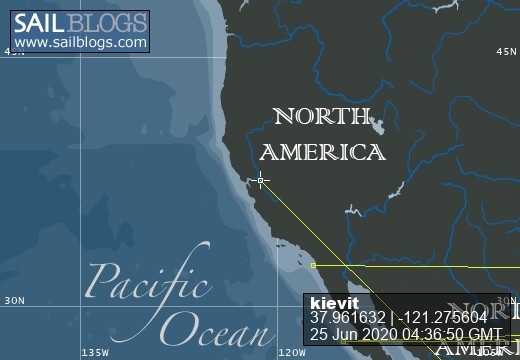
KIEVIT FRIES
21 July 2017
02 May 2016 | PALS ON THE BEACH
26 March 2016 | CHIAPIS, MEXICO: SAN CRISTOBAL delas CASAS, PALENQUE AND THE
25 March 2016 | CHIAPIS MEXICO
09 March 2016 | REALLY, MORE DUTCH FRIENDS!
21 February 2016 | STREETS FILLED WITH FAMILIES CELEBRATING
20 February 2016 | ISABEL and MARJ at her house, El Salvador
20 February 2016
19 February 2016 | BAHIA de JALTEPEQUE
17 February 2016
16 February 2016
15 February 2016
14 February 2016
13 February 2016
13 February 2016
11 February 2016
10 February 2016
09 February 2016
08 February 2016
07 February 2016
Return to California
21 July 2017
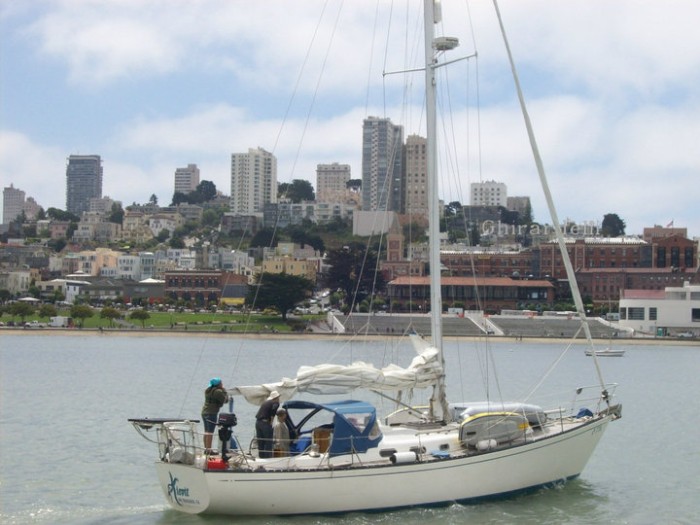
What a wonderful adventure!
SOUTH MEXICO PACIFIC COAST
02 May 2016 | PALS ON THE BEACH
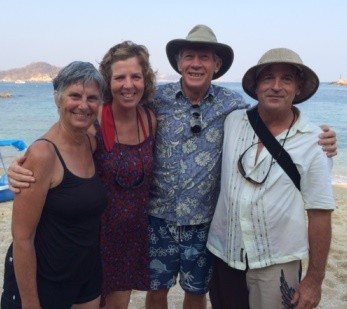
HUATULCO
We were in Huatulco for about 10 days. This is the first stop on our way back up the coast. When we passed this way three years ago, Vivien and Joel had recently decided to settle here and sell their boat. Now they are part of the community. Vivien has done an impressive job with the logistics of sending homeless dogs to Canada. This is all a volunteer effort and an airline provides the flights. Vivien co-ordinates passengers who act as escorts. Of course, there is a network of foster homes and veterinarians in Huatulco. Joel works on boats and is chief gardener for a community garden he organized in town.
We like these guys! So we enjoyed their company and friendship over dinners, happenings in town and getting to know some of their friends. We took a tourist kind of trip to Hagia Sophia, a rather unique horticultural site that is a demonstration, sustainable, organic garden for farming in that region. It was a beautiful site and a look into the mountains behind the coast. A cool highlight was swimming in a pristine waterfall pool! MEXICO ADVENTURES 2016 Photo gallery: Hagia Sophia, and HUATULCO.
We were readay to leave Huatulco on Saturday, 27 Feb, only to find the port was closed. You really can't see the ocean from the marina, so we were perturbed to be restricted. Talking to Port Captain, he advised against leaving, but said he could not chain us! Captain Dave said, 'let's go.' Another boat, Robert and Anika on Spunky decided the same. Talking to the Scuba Diver next door to the office, we were told which anchorage would be secure for the night. We had a little pas de deux at the diesel dock as Spunky and Kievit maneuvered in strong wind around the anchored dredging boat. Finally we were off and out of the breakwater plunging into deep wave troughs. It became apparent why the port was closed! We motored on for several hours and then tucked into Bahia Chachacual. Amazing calm! Had dinner on Kievit and lunch the next day on Spunky and lots of talk with Richard and Anika about sailing and the human condition. Kindred (younger) spirits, why we feel Dutch!
We stayed on Kievit for another day or so in the anchorage, when tour boats started arriving in calmer conditions for snorkeling, then we left. Anchored in some favorite spots from our trip down 3 years ago. Not so interesting this time, and there was a red tide hanging off the coast. A bit disappointing. We headed on to Puerto Angeles and had a delightful anchorage there. Only one other sail boat, but the harbor was very active with local fishing pangas. Captains revved up their 100+ hp engine and charged through the water and up on the beach till the boat STOPPED. Then the family gathered around to unload the fish. I could still be there just watching. We walked around the hilly town and bought vegies and ice. Had a nice meal with salad and didn't get sick, that was good too! Dave spent two and half hours scraping barnacles off prop. Another regular cruising activity in paradise.
PUERTO ESCONDIDO: 15 50N:97 052W
Next day, March 3, Ruby Fries' 18th birthday!, we motor sailed, very calm sea conditions to Escondido, which is a well known surfing town. There was no surf! That was very good for us to anchor and sleep well on a water bed.
Amazing during the day we passed through thousands of dolphins, two different times. These dolphins were feeding and none took time off to play with us and swim with the boat. In our experience this is odd. We also saw many turtles floating by. When the sea is calm, it is a great time to see sea wildlife. Really, we did a survey count and had to estimate thousand or more dolphins.
ACAPULCO 16 51N:97 05W
We left Escondido at 4:45 am, Friday, March 4, heading for Acapulco. Again, went through a swarm of thousands of dolphins and throughout the day saw many turtles. Such a pleasure! In the evening we had good wind for sailing for some hours. A sliver of orange moon, looking like a small boat, rose above the horizon about midnight. By daybreak the boat slowed down with a strong south flowing current. A sea breeze picked up about noon which helped us reach Puerto Marques/Acapulco about 4pm Saturday evening. Most of Sunday, next day, we enjoyed watching the activity on the beach. Marques is more of a local Mexican family beach than Acapulco and we were the only foreign cruising boat in the harbor. We had a nice meal at a beach restaurant and enjoyed talking with our waiter who had perfect English and came from Anaheim, CA.
On Monday morning we drove the boat over to the marina in Acapulco. Three days in Acapulco and it was all boat work in paradise! Very comfortable, too! Whenever possible, we have to get off the boat and walk. There was a beautiful infinity swimming pool at the top of the marina - no I didn't get photos! There we spent the first afternoon. Tuesday morning, we hiked out of marina and turned in the direction we did not go when there before. This area is the old and non-touristic part of town. The beaches just off the business streets, remind me of beaches on the Atlantic coast in the 1950's. (I was very young then!). We had intended to get new boat batteries before starting out this year before leaving El Salvador. We only got one new starting battery. Dave was concerned about the other working batteries not holding a charge and wanted new batteries if he could find them, but thinking they would not be available until Puerto Vallarta. On this walk, we stopped in a couple marine stores and found a source. Remember, this is Mexico. Within one hour, the marina store manager had the old batteries out and new ones in place. The batteries are very heavy and getting them removed and replaced was not a problem in Mexico, but has been an issue in the States! And, the batteries, not cheap, but not more expensive in Mexico. OK, I see I've written a long paragraph. Getting this job done was a big deal! The rest of the time in Acapulco we had to do some grocery provisioning, and a good grocery store was across the street from the marina. And for two days we had to hunker down and really enjoy terrific thunder storms and torrents of rain. Also take care of a few leaks on the boat. The only shower at this marina was the outdoor one at the fancy swimming pool. When we went there the last afternoon, as we swam, a bunch of guys drifted in with their music equipment. Before we got to the shower, these dudes where stipping down to their underwear and showering. As we left I asked, "que pasa?" (hoping they were going to play for a party & we could get in on it). They had driven in from far away, to do a photo shoot for an album cover- and needed to shower before they got dressed. We didn't shower with the boys! Next morning when Dave went to the bathroom in this area, he said their wet underwear was all over the floor.
Also, out on our dock, a movie was being shot for two days. There are a couple of photos of that in the gallery. Three years ago, we saw the cliff divers, the market and a terrific local history museum. Strange, this year, we are not tourists.
Before leaving Acapulco the next morning, Friday, March 11, we needed to fuel up. Every experience at the fuel dock is different, but this one! There was wind, big surge, meaning that finally we got the boat turned around as in backing rather than pulling into dock. Dave is driving the boat, I'm communicating in Spanish and sign with the dock guy, and unable to communicate with Dave, who is doing what he thinks. Oh my! Once tied up, the water surge pulled the boat back some feet before releasing and propelling her in a forward direction. In between surges, the boat was pressed by wind and waves against the dock, so that all the fenders were squished flat. Then, before gassing up, I had to take the papers into the office to get everything photo copied, while Dave was wondering what the hell....\. Dave filled the inboard tanks, which is always a tender operation because you don't want to spill diesel in the water - you know, environmentalists & all, and the boat was jerking in several directions. In order to pay, Dave had to go back to the office and some more photocopying. The one dock worker seemed to be relishing his power over us in directing the operation and requiring a lot of unnecessary paper work. Anyway, as we cleared the dock, pulling away, I thought; After the past 10 years of cruising and more years sailing (which always involves docking in unbelievable situations) I'm not even close to an anxiety attack! Believe me, docking in general and particularly at unknown fuel docks, should not be an emergency situation. Yet, it often feels like one! (Variety of stories could be told at this point!)
We were in Huatulco for about 10 days. This is the first stop on our way back up the coast. When we passed this way three years ago, Vivien and Joel had recently decided to settle here and sell their boat. Now they are part of the community. Vivien has done an impressive job with the logistics of sending homeless dogs to Canada. This is all a volunteer effort and an airline provides the flights. Vivien co-ordinates passengers who act as escorts. Of course, there is a network of foster homes and veterinarians in Huatulco. Joel works on boats and is chief gardener for a community garden he organized in town.
We like these guys! So we enjoyed their company and friendship over dinners, happenings in town and getting to know some of their friends. We took a tourist kind of trip to Hagia Sophia, a rather unique horticultural site that is a demonstration, sustainable, organic garden for farming in that region. It was a beautiful site and a look into the mountains behind the coast. A cool highlight was swimming in a pristine waterfall pool! MEXICO ADVENTURES 2016 Photo gallery: Hagia Sophia, and HUATULCO.
We were readay to leave Huatulco on Saturday, 27 Feb, only to find the port was closed. You really can't see the ocean from the marina, so we were perturbed to be restricted. Talking to Port Captain, he advised against leaving, but said he could not chain us! Captain Dave said, 'let's go.' Another boat, Robert and Anika on Spunky decided the same. Talking to the Scuba Diver next door to the office, we were told which anchorage would be secure for the night. We had a little pas de deux at the diesel dock as Spunky and Kievit maneuvered in strong wind around the anchored dredging boat. Finally we were off and out of the breakwater plunging into deep wave troughs. It became apparent why the port was closed! We motored on for several hours and then tucked into Bahia Chachacual. Amazing calm! Had dinner on Kievit and lunch the next day on Spunky and lots of talk with Richard and Anika about sailing and the human condition. Kindred (younger) spirits, why we feel Dutch!
We stayed on Kievit for another day or so in the anchorage, when tour boats started arriving in calmer conditions for snorkeling, then we left. Anchored in some favorite spots from our trip down 3 years ago. Not so interesting this time, and there was a red tide hanging off the coast. A bit disappointing. We headed on to Puerto Angeles and had a delightful anchorage there. Only one other sail boat, but the harbor was very active with local fishing pangas. Captains revved up their 100+ hp engine and charged through the water and up on the beach till the boat STOPPED. Then the family gathered around to unload the fish. I could still be there just watching. We walked around the hilly town and bought vegies and ice. Had a nice meal with salad and didn't get sick, that was good too! Dave spent two and half hours scraping barnacles off prop. Another regular cruising activity in paradise.
PUERTO ESCONDIDO: 15 50N:97 052W
Next day, March 3, Ruby Fries' 18th birthday!, we motor sailed, very calm sea conditions to Escondido, which is a well known surfing town. There was no surf! That was very good for us to anchor and sleep well on a water bed.
Amazing during the day we passed through thousands of dolphins, two different times. These dolphins were feeding and none took time off to play with us and swim with the boat. In our experience this is odd. We also saw many turtles floating by. When the sea is calm, it is a great time to see sea wildlife. Really, we did a survey count and had to estimate thousand or more dolphins.
ACAPULCO 16 51N:97 05W
We left Escondido at 4:45 am, Friday, March 4, heading for Acapulco. Again, went through a swarm of thousands of dolphins and throughout the day saw many turtles. Such a pleasure! In the evening we had good wind for sailing for some hours. A sliver of orange moon, looking like a small boat, rose above the horizon about midnight. By daybreak the boat slowed down with a strong south flowing current. A sea breeze picked up about noon which helped us reach Puerto Marques/Acapulco about 4pm Saturday evening. Most of Sunday, next day, we enjoyed watching the activity on the beach. Marques is more of a local Mexican family beach than Acapulco and we were the only foreign cruising boat in the harbor. We had a nice meal at a beach restaurant and enjoyed talking with our waiter who had perfect English and came from Anaheim, CA.
On Monday morning we drove the boat over to the marina in Acapulco. Three days in Acapulco and it was all boat work in paradise! Very comfortable, too! Whenever possible, we have to get off the boat and walk. There was a beautiful infinity swimming pool at the top of the marina - no I didn't get photos! There we spent the first afternoon. Tuesday morning, we hiked out of marina and turned in the direction we did not go when there before. This area is the old and non-touristic part of town. The beaches just off the business streets, remind me of beaches on the Atlantic coast in the 1950's. (I was very young then!). We had intended to get new boat batteries before starting out this year before leaving El Salvador. We only got one new starting battery. Dave was concerned about the other working batteries not holding a charge and wanted new batteries if he could find them, but thinking they would not be available until Puerto Vallarta. On this walk, we stopped in a couple marine stores and found a source. Remember, this is Mexico. Within one hour, the marina store manager had the old batteries out and new ones in place. The batteries are very heavy and getting them removed and replaced was not a problem in Mexico, but has been an issue in the States! And, the batteries, not cheap, but not more expensive in Mexico. OK, I see I've written a long paragraph. Getting this job done was a big deal! The rest of the time in Acapulco we had to do some grocery provisioning, and a good grocery store was across the street from the marina. And for two days we had to hunker down and really enjoy terrific thunder storms and torrents of rain. Also take care of a few leaks on the boat. The only shower at this marina was the outdoor one at the fancy swimming pool. When we went there the last afternoon, as we swam, a bunch of guys drifted in with their music equipment. Before we got to the shower, these dudes where stipping down to their underwear and showering. As we left I asked, "que pasa?" (hoping they were going to play for a party & we could get in on it). They had driven in from far away, to do a photo shoot for an album cover- and needed to shower before they got dressed. We didn't shower with the boys! Next morning when Dave went to the bathroom in this area, he said their wet underwear was all over the floor.
Also, out on our dock, a movie was being shot for two days. There are a couple of photos of that in the gallery. Three years ago, we saw the cliff divers, the market and a terrific local history museum. Strange, this year, we are not tourists.
Before leaving Acapulco the next morning, Friday, March 11, we needed to fuel up. Every experience at the fuel dock is different, but this one! There was wind, big surge, meaning that finally we got the boat turned around as in backing rather than pulling into dock. Dave is driving the boat, I'm communicating in Spanish and sign with the dock guy, and unable to communicate with Dave, who is doing what he thinks. Oh my! Once tied up, the water surge pulled the boat back some feet before releasing and propelling her in a forward direction. In between surges, the boat was pressed by wind and waves against the dock, so that all the fenders were squished flat. Then, before gassing up, I had to take the papers into the office to get everything photo copied, while Dave was wondering what the hell....\. Dave filled the inboard tanks, which is always a tender operation because you don't want to spill diesel in the water - you know, environmentalists & all, and the boat was jerking in several directions. In order to pay, Dave had to go back to the office and some more photocopying. The one dock worker seemed to be relishing his power over us in directing the operation and requiring a lot of unnecessary paper work. Anyway, as we cleared the dock, pulling away, I thought; After the past 10 years of cruising and more years sailing (which always involves docking in unbelievable situations) I'm not even close to an anxiety attack! Believe me, docking in general and particularly at unknown fuel docks, should not be an emergency situation. Yet, it often feels like one! (Variety of stories could be told at this point!)
TIME TRAVEL in CHIAPAS
26 March 2016 | CHIAPIS, MEXICO: SAN CRISTOBAL delas CASAS, PALENQUE AND THE
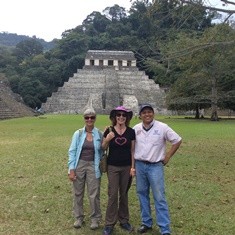
When we arrived back at the marina from our respite in the cool mountains we learned that the weather window to cross Bahia Tehuanapec had slammed shut. In the past four years sailing the central Pacific, we have become believers in weather forecasts for the Papagayos of Nicaragua and the Tehuanapeckers of Mexico!
When we picked up Debbie and Dennis on Feb 2, they were informed we would not be sailing for a least a week, as Gale force winds were predicted. i We drove right from the airport to the festival in Tuxtla Chica (pictures in gallery: MEXICO ADVENTURES (MX ADV 2016)
The next day, our friends needed to recover from the previous two days of air travel. And, we made some reservations to go to San Cristobal de las casas the next day. The four of us decided to keep the small rental car we had, and off we went the next day. Enrique, Marina Chiapis harbor master, gave us the best directions. We drove north out of Tapechula, across the high plain, called Isthsmus de Tehuanapec, that borders the ocean, and then east into the rugged mountains. It was amazing to experience the force of the wind coming over-land from the Carribean in this relatively narrow stretch of land. We were very glad to not be on the ocean where these powerful and steady winds could expand and grow enormous waves.
The scenery was spectacular as a good toll-road climbed a steady grade and bridged an enormous gorge which, along with a hydro-electric lake, is a major tourist and recreation site in Chiapas.
The journey was indeed longer than had been expected and we arrived in San Cristobal as early dusk from very low cloud cover was descending on the city, about five o'clock. When we found the car park for the reserved hotel and got out of the car, It Was COLD! We all had on our sandals and light clothes from the heat of the marina. Now, we were at over 7,000 ft. and drizzle from the clouds. Once we had some dinner and got settled in our rooms under heaps of covers- we could appreciate being transported to a different world.
Friday we got our bearings in town and made a tour of the textile museum, which interesting, ancient ceramics. The museum was a succinct anthropological history of the importance of Mayan textiles to the culture of the indigenous people from ancient times into today. From a matriarchal society, the women had told the culture of the origin of the people with woven and embroidered symbols. The clothing they wear today, is not a "style," but continues to signify who they are. As we had visited a Mayan weaving village three years ago, I was very interested to find so much information about the pieces I had purchased from 21st century weavers. In the next week as we traveled throughout Chiapas, it was very special to see how many of the women and girls wore traditional clothing everyday. Saying, "This is who I am!"
We did some other touristic things, like tasting chocolate drinks and hiking up the steps to the church on the hill. We visited with the owner of the restaurant, Belil, and decided to have dinner there. Ricardo and his wife Carmen had worked for human rights in the jungle for 25 years. Now, they bring fair-trade artisian products from jungle co-operatives, and good food and friendship to tourists in San Cristobal. Ricardo's English was very friendly and he gave us good tips on side trips to take if we had time.
Saturday, Dave and I went to the artisan to buy a special bedspread. Then on to the Saturday food market which was just down right amazing! We walked by many women and kids who had live chickens, tied by their feet, threaded on two fingers, sometimes both hands. Very busy, but orderly with walkways past the individuals, mostly with produce on the ground. One sight I enjoyed was teenage girls, traditional clothes, heads together over one cell phone. I cannot take photos in such a place, so in the gallery are photos of some post cards I bought. They are not so colorful as was the market.
Later in the day, Debbie and I went to a town where ceramics are the village product . Ricardo said there is a very large pot from village in the MOMA in New York. The work is burnished and low fired, as I understand, in open pit fires. Being Saturday, no one was working, but a little museum shop was open and we had a look around. The cool thing is, making pots has been going on here for nobody knows how long. I'm so glad to have seen the village, as during the next week's travel, I saw many, many pots...large and small and figures, and mostly old, like 100 years, and they all came from this place, Amatenango.
We decided to stay in San Cristobal another night but moved up the street to a place that had been a monastery and school. There were many wonderful photographs from more than a hundred years ago. Also many wonderful pots from Amatenango. Photos I took of Posada Vieja are in the gallery: San Cristobal.
San Cristobal is a place to be and experience. There are many museums, we saw one. It is an old Spanish city, from1523. One of the first places the conquistadors claimed! I have the feeling there are many things one could learn there. For me, it was like looking through a key hole at conflicting cultures. AND, the Pope was arriving in a few days!PHOTOS: SAN CRISTOBAL, in album: MEXICAN ADVENTURES 2016
Dave looked every night at Buoy Weather, a website that predicts ocean wind and surf conditions. Saturday it predicted continuing gale force winds through the next Sunday. We decided to continue our land travel in Chiapas. Monday morning, Feb 8 we set off for a major Mayan site, Palenque. The journey was memorable on the two lane road, up and over numerous mountain passes, passing through cloud forest, with steep drop-offs on one side. The road was sometimes pretty good, some places road became pieces with much dust and always TOPES -usually in sets of three, humps in the road to slow traffic to buy stuff at the afore villages and mom and pop stores. There were a lot of them! Like, thousands, no kidding. Some few places we encountered children holding a rope stretched across the road to stop cars so they could cluster at the window to sell vegies or snacks. The first time alarmed us, but when the kids either giggled or whined when we said no, thanks, we enjoyed the distraction. The only problem came if you opened the window or bought one thing - then the kids got a bit cheeky!
Most vehicles on this road were pick-up trucks and transport trucks. A few tourist vans, local buses and vans running between villages. We didn't see other gringos in private cars. Palenque could be called 'remote.' Debbie had made an online reservation for a hotel near Palenque before we left San Cristobal and we were delighted to find they were expecting us when we arrived, as there had not been a confirmation. The place was an old style resort with thatched roof cabins. Best of all, we were greeted by a band of resident macaws, and they liked to hang out on the roofs next to us. After a long day of travel, we were glad to relax and there was an onsite restaurant. There had been rain storms the days before, and the normal, hot weather front had not yet returned.
Palenque is a world heritage site. It is unique when compared to some other Mayan sites in Chiapas and the Yucatan. It was not unearthered, that is discovered until the and the grand temples are clustered around a smaller plaza which gives a more human scale. It is also known that artisans and peasant farmers lived in the surrounding area. It was more of a small town than a sacred ceremonial and sacrifice site. As we were getting things arranged to take and leave in the car, a pleasant guide walked up and started chatting, in English. (How did he know?) He showed us the map of the site and offered to guide us for 2 hours or all day. His price was fair, about $60 for the four of us for the day, and we all felt like we had been with an engaging Mayan professor. He made the ruins come to life as he explained many details of construction in terms of their importance to the ancient Mayan culture. Even more interesting was learning howthe natural history of the site is still relevant and still be practiced or revived today. 'Nacho" (Ignacious) was quick to pick up on any questions we had, including conflicts within the current culture and the outside world. Our all day was 9-4, and Nacho shared his life in Tennessee for seven years and his return to Chiapas, in large part to educate his children in the Mayan culture. Thanks to Nacho, we felt emmersed in Mayan culture and for me,even culture shocked.
The Zapotistas made a surprise occupation of San Cristobal on New Year's day,1994, also the day the NAFTA treaty initiated. The unknown guerrilla movement was demanding human rights for indigenous Mexicans and knowingly protesting globalization. The situation was unique, in that the Zapatistas, promoted their revolution worldwide on the internet. Since the inception in 1994, I have been following the movement, interested and hoping that there might be a just and peaceful resolution, for once in history! I always wanted to see for myself, this Chiapas, the ancestors continued the culture of indigenous people living on the land, long before the inhabitation of North America. The Zapatista contrasted the natural wealth of the Chiapas state with the extreme poverty of the people who lived in their ancestral home. Our guide Nacho, talked of the mineral wealth of Chiapas, but the real wealth is WATER, he said. And so it is,and mind boggling. The legendary founder of the Zapatistas is "Marcos", and wouldn't you know, he was formerly a university professor! What could WATER have to do with indigenous rights and globalization?
The area of Palenque and the Lacandon jungle, all along the Mexican border with Guatemala is the home of the Zapatista movement . I knew we were in the area, and slowly, over the week spent in the mountains and jungle of Chiapas, I realized, I was exactly there! I love that! Instead of agonizing over how to get 'there', we just went to escape the heat of the coast.
I asked Nacho for some guidance in visiting the Lacandon jungle, since our route back to Tapachula (Chiapas marina) was taking us right through it. There are no guide books for this region, but I had heard about eco lodges. Nacho drew us a map and gave us detailed directions. First we would go to Bonampak, a ruins that was unearthed so recently, that the murals which are on the wall of rooms shielded from the environment and sun, retain deep color. And then travel a short distance on gravel and dirt roads to an ecolodge and restaurant. He told us his friends there, Vicente and Enrique. "Just ask for them, everyone knows, they will take care of you!"
The next day, we left Palenque, thinking the road would be pretty good. We soon ran into a long line of cars behind a big truck, chugging up the hill. At least it was shady jungle roadsides. We broke free after a half hour of gridlock and sped along, UNTIL....the first TOPE. We four cast bets about how many Topes (humps in the road) in the next hour. I said, none, optimistically! Another 36, another 200, more than 200. Oh, the last won. I'm only going to relate what happened the next day at breakfast. There are photos in the gallery of Bonampak (remote and amazing) and the lovely cabins and riverside lodge of Vicente.
Nacho had told us that his friend Enrique had the best food, we were instructed to go there for dinner. But, we chose to eat at Vicente's place because we were all too tired to hike the 50 steps up the road to Enrique's in the evening. Dave and I decided we needed to go to Enrique's place for breakfast. Debbie and Dennis joined us. The dining room was empty, as there were voices behind a wall, I called out, 'hola, buenas dias". We were greeted from behind the wall, which was the kitchen. A friendly man with big black hair and wearing a white gown, came out to greet us. Yes, we'll make you breakfast. He didn't speak English, but took our order perfectly. He was in and out from the kitchen, checking on us, and we learned that he was Enrique, father of Nacho's friend Enrique. The ecolodge is run by Enrique the son, and his dad explained that he was still asleep, of course. There were interesting maps of Chiapas and the Lacandon jungle, and news articles and photos and paintings on the walls. I saw that there was an article with the Swiss photographer and anthropologist, who worked in this area in the 50's along with her husband, an archaeologist who worked at Palenque. She, Trudy Duby, fought to protect the scattered Lacandon people and their jungle environment. Together, they created a home and museum in San Cristobal called Na Bolom, devoted to archeology and the indigenous people of Chiapas.
When I asked Enrique, the father, to tell me about this, he showed me himself, a little boy, in the front of one of the photos, and also his father. We exchanged ages, so I know that Enrique is ten years younger than me. It was apparent that Enrique and his family were in a pivitol juncture of preservation of the Lacandon culture. He understood that I appreciated the significance of the photo that showed history being made , in this very spot, circa de 1960. We were there for about one hour. I look forward to returning, learning and appreciating even more! An added attraction is that this area is great birding territory! If I had tried to plan this trip, it would never have happened. It was serendipitous!
NEW BIRDS Seen in LACANDON: Wood Thrush, White -whiskered Puff Bird, Green Honeycreeper, Buff-throated Saltator, Audubon Oriole
Marina Chiapas: Bare-throated Tiger Heron, Osprey (Not new, but we were glad to see them)
Lagos de Montebello:
We had to get going, as it appeared from Buoy Weather, that we might be able to sail the Tehuanapec in a few days. So we headed for this beautiful region of Lakes. But when we got there, in the afternoon, we discovered ourselves at a high altitude. It was COLD, and the only cabins available were not acceptable & cold! It was decided to drive on to Comitan and Debbie made an online reservation at a hotel. We had a heck of a time finding it, but we did. Pizza at Italian restaurant around the corner. Friday we drove back to Marina Chiapis, three hour trip, we thought, took at least five. Again, those TOPES, and many, lovely little towns and villages, up and down mountains. But we were done. On to Sailing...
Photos from this trip are in sub albums: Mexican Adventures 2016
When we picked up Debbie and Dennis on Feb 2, they were informed we would not be sailing for a least a week, as Gale force winds were predicted. i We drove right from the airport to the festival in Tuxtla Chica (pictures in gallery: MEXICO ADVENTURES (MX ADV 2016)
The next day, our friends needed to recover from the previous two days of air travel. And, we made some reservations to go to San Cristobal de las casas the next day. The four of us decided to keep the small rental car we had, and off we went the next day. Enrique, Marina Chiapis harbor master, gave us the best directions. We drove north out of Tapechula, across the high plain, called Isthsmus de Tehuanapec, that borders the ocean, and then east into the rugged mountains. It was amazing to experience the force of the wind coming over-land from the Carribean in this relatively narrow stretch of land. We were very glad to not be on the ocean where these powerful and steady winds could expand and grow enormous waves.
The scenery was spectacular as a good toll-road climbed a steady grade and bridged an enormous gorge which, along with a hydro-electric lake, is a major tourist and recreation site in Chiapas.
The journey was indeed longer than had been expected and we arrived in San Cristobal as early dusk from very low cloud cover was descending on the city, about five o'clock. When we found the car park for the reserved hotel and got out of the car, It Was COLD! We all had on our sandals and light clothes from the heat of the marina. Now, we were at over 7,000 ft. and drizzle from the clouds. Once we had some dinner and got settled in our rooms under heaps of covers- we could appreciate being transported to a different world.
Friday we got our bearings in town and made a tour of the textile museum, which interesting, ancient ceramics. The museum was a succinct anthropological history of the importance of Mayan textiles to the culture of the indigenous people from ancient times into today. From a matriarchal society, the women had told the culture of the origin of the people with woven and embroidered symbols. The clothing they wear today, is not a "style," but continues to signify who they are. As we had visited a Mayan weaving village three years ago, I was very interested to find so much information about the pieces I had purchased from 21st century weavers. In the next week as we traveled throughout Chiapas, it was very special to see how many of the women and girls wore traditional clothing everyday. Saying, "This is who I am!"
We did some other touristic things, like tasting chocolate drinks and hiking up the steps to the church on the hill. We visited with the owner of the restaurant, Belil, and decided to have dinner there. Ricardo and his wife Carmen had worked for human rights in the jungle for 25 years. Now, they bring fair-trade artisian products from jungle co-operatives, and good food and friendship to tourists in San Cristobal. Ricardo's English was very friendly and he gave us good tips on side trips to take if we had time.
Saturday, Dave and I went to the artisan to buy a special bedspread. Then on to the Saturday food market which was just down right amazing! We walked by many women and kids who had live chickens, tied by their feet, threaded on two fingers, sometimes both hands. Very busy, but orderly with walkways past the individuals, mostly with produce on the ground. One sight I enjoyed was teenage girls, traditional clothes, heads together over one cell phone. I cannot take photos in such a place, so in the gallery are photos of some post cards I bought. They are not so colorful as was the market.
Later in the day, Debbie and I went to a town where ceramics are the village product . Ricardo said there is a very large pot from village in the MOMA in New York. The work is burnished and low fired, as I understand, in open pit fires. Being Saturday, no one was working, but a little museum shop was open and we had a look around. The cool thing is, making pots has been going on here for nobody knows how long. I'm so glad to have seen the village, as during the next week's travel, I saw many, many pots...large and small and figures, and mostly old, like 100 years, and they all came from this place, Amatenango.
We decided to stay in San Cristobal another night but moved up the street to a place that had been a monastery and school. There were many wonderful photographs from more than a hundred years ago. Also many wonderful pots from Amatenango. Photos I took of Posada Vieja are in the gallery: San Cristobal.
San Cristobal is a place to be and experience. There are many museums, we saw one. It is an old Spanish city, from1523. One of the first places the conquistadors claimed! I have the feeling there are many things one could learn there. For me, it was like looking through a key hole at conflicting cultures. AND, the Pope was arriving in a few days!PHOTOS: SAN CRISTOBAL, in album: MEXICAN ADVENTURES 2016
Dave looked every night at Buoy Weather, a website that predicts ocean wind and surf conditions. Saturday it predicted continuing gale force winds through the next Sunday. We decided to continue our land travel in Chiapas. Monday morning, Feb 8 we set off for a major Mayan site, Palenque. The journey was memorable on the two lane road, up and over numerous mountain passes, passing through cloud forest, with steep drop-offs on one side. The road was sometimes pretty good, some places road became pieces with much dust and always TOPES -usually in sets of three, humps in the road to slow traffic to buy stuff at the afore villages and mom and pop stores. There were a lot of them! Like, thousands, no kidding. Some few places we encountered children holding a rope stretched across the road to stop cars so they could cluster at the window to sell vegies or snacks. The first time alarmed us, but when the kids either giggled or whined when we said no, thanks, we enjoyed the distraction. The only problem came if you opened the window or bought one thing - then the kids got a bit cheeky!
Most vehicles on this road were pick-up trucks and transport trucks. A few tourist vans, local buses and vans running between villages. We didn't see other gringos in private cars. Palenque could be called 'remote.' Debbie had made an online reservation for a hotel near Palenque before we left San Cristobal and we were delighted to find they were expecting us when we arrived, as there had not been a confirmation. The place was an old style resort with thatched roof cabins. Best of all, we were greeted by a band of resident macaws, and they liked to hang out on the roofs next to us. After a long day of travel, we were glad to relax and there was an onsite restaurant. There had been rain storms the days before, and the normal, hot weather front had not yet returned.
Palenque is a world heritage site. It is unique when compared to some other Mayan sites in Chiapas and the Yucatan. It was not unearthered, that is discovered until the and the grand temples are clustered around a smaller plaza which gives a more human scale. It is also known that artisans and peasant farmers lived in the surrounding area. It was more of a small town than a sacred ceremonial and sacrifice site. As we were getting things arranged to take and leave in the car, a pleasant guide walked up and started chatting, in English. (How did he know?) He showed us the map of the site and offered to guide us for 2 hours or all day. His price was fair, about $60 for the four of us for the day, and we all felt like we had been with an engaging Mayan professor. He made the ruins come to life as he explained many details of construction in terms of their importance to the ancient Mayan culture. Even more interesting was learning howthe natural history of the site is still relevant and still be practiced or revived today. 'Nacho" (Ignacious) was quick to pick up on any questions we had, including conflicts within the current culture and the outside world. Our all day was 9-4, and Nacho shared his life in Tennessee for seven years and his return to Chiapas, in large part to educate his children in the Mayan culture. Thanks to Nacho, we felt emmersed in Mayan culture and for me,even culture shocked.
The Zapotistas made a surprise occupation of San Cristobal on New Year's day,1994, also the day the NAFTA treaty initiated. The unknown guerrilla movement was demanding human rights for indigenous Mexicans and knowingly protesting globalization. The situation was unique, in that the Zapatistas, promoted their revolution worldwide on the internet. Since the inception in 1994, I have been following the movement, interested and hoping that there might be a just and peaceful resolution, for once in history! I always wanted to see for myself, this Chiapas, the ancestors continued the culture of indigenous people living on the land, long before the inhabitation of North America. The Zapatista contrasted the natural wealth of the Chiapas state with the extreme poverty of the people who lived in their ancestral home. Our guide Nacho, talked of the mineral wealth of Chiapas, but the real wealth is WATER, he said. And so it is,and mind boggling. The legendary founder of the Zapatistas is "Marcos", and wouldn't you know, he was formerly a university professor! What could WATER have to do with indigenous rights and globalization?
The area of Palenque and the Lacandon jungle, all along the Mexican border with Guatemala is the home of the Zapatista movement . I knew we were in the area, and slowly, over the week spent in the mountains and jungle of Chiapas, I realized, I was exactly there! I love that! Instead of agonizing over how to get 'there', we just went to escape the heat of the coast.
I asked Nacho for some guidance in visiting the Lacandon jungle, since our route back to Tapachula (Chiapas marina) was taking us right through it. There are no guide books for this region, but I had heard about eco lodges. Nacho drew us a map and gave us detailed directions. First we would go to Bonampak, a ruins that was unearthed so recently, that the murals which are on the wall of rooms shielded from the environment and sun, retain deep color. And then travel a short distance on gravel and dirt roads to an ecolodge and restaurant. He told us his friends there, Vicente and Enrique. "Just ask for them, everyone knows, they will take care of you!"
The next day, we left Palenque, thinking the road would be pretty good. We soon ran into a long line of cars behind a big truck, chugging up the hill. At least it was shady jungle roadsides. We broke free after a half hour of gridlock and sped along, UNTIL....the first TOPE. We four cast bets about how many Topes (humps in the road) in the next hour. I said, none, optimistically! Another 36, another 200, more than 200. Oh, the last won. I'm only going to relate what happened the next day at breakfast. There are photos in the gallery of Bonampak (remote and amazing) and the lovely cabins and riverside lodge of Vicente.
Nacho had told us that his friend Enrique had the best food, we were instructed to go there for dinner. But, we chose to eat at Vicente's place because we were all too tired to hike the 50 steps up the road to Enrique's in the evening. Dave and I decided we needed to go to Enrique's place for breakfast. Debbie and Dennis joined us. The dining room was empty, as there were voices behind a wall, I called out, 'hola, buenas dias". We were greeted from behind the wall, which was the kitchen. A friendly man with big black hair and wearing a white gown, came out to greet us. Yes, we'll make you breakfast. He didn't speak English, but took our order perfectly. He was in and out from the kitchen, checking on us, and we learned that he was Enrique, father of Nacho's friend Enrique. The ecolodge is run by Enrique the son, and his dad explained that he was still asleep, of course. There were interesting maps of Chiapas and the Lacandon jungle, and news articles and photos and paintings on the walls. I saw that there was an article with the Swiss photographer and anthropologist, who worked in this area in the 50's along with her husband, an archaeologist who worked at Palenque. She, Trudy Duby, fought to protect the scattered Lacandon people and their jungle environment. Together, they created a home and museum in San Cristobal called Na Bolom, devoted to archeology and the indigenous people of Chiapas.
When I asked Enrique, the father, to tell me about this, he showed me himself, a little boy, in the front of one of the photos, and also his father. We exchanged ages, so I know that Enrique is ten years younger than me. It was apparent that Enrique and his family were in a pivitol juncture of preservation of the Lacandon culture. He understood that I appreciated the significance of the photo that showed history being made , in this very spot, circa de 1960. We were there for about one hour. I look forward to returning, learning and appreciating even more! An added attraction is that this area is great birding territory! If I had tried to plan this trip, it would never have happened. It was serendipitous!
NEW BIRDS Seen in LACANDON: Wood Thrush, White -whiskered Puff Bird, Green Honeycreeper, Buff-throated Saltator, Audubon Oriole
Marina Chiapas: Bare-throated Tiger Heron, Osprey (Not new, but we were glad to see them)
Lagos de Montebello:
We had to get going, as it appeared from Buoy Weather, that we might be able to sail the Tehuanapec in a few days. So we headed for this beautiful region of Lakes. But when we got there, in the afternoon, we discovered ourselves at a high altitude. It was COLD, and the only cabins available were not acceptable & cold! It was decided to drive on to Comitan and Debbie made an online reservation at a hotel. We had a heck of a time finding it, but we did. Pizza at Italian restaurant around the corner. Friday we drove back to Marina Chiapis, three hour trip, we thought, took at least five. Again, those TOPES, and many, lovely little towns and villages, up and down mountains. But we were done. On to Sailing...
Photos from this trip are in sub albums: Mexican Adventures 2016
MEXICO 2016
25 March 2016 | CHIAPIS MEXICO
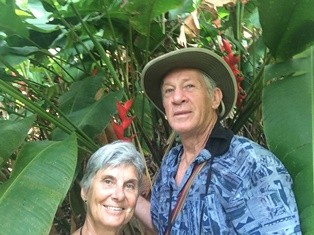
Adios El Salvador! 25 January 2016, crossed the bar at Bahia Jaltepeque at high tide, 4 pm. Sailing northwest to Mexico.
Forty-seven hours later, 3 pm. 27 January, tied up at the dock, Marina Chiapis. Next day we checked through immigration, customs and the Port Captain. We had checked out just about a year ago, on our way to many adventures in El Salvador, Nicaragua and Costa Rica. Cleaned up the boat after a lot of salt water spray the last hours of the recent voyage. Took care of maintenance jobs (boat & us) for next couple of days. Debbie and Dennis Davis will be joining us to sail, on 2 February. The Tapachula airport is 15 minutes away, so it is an easy connection.
It seems to be always hot and steamy in this south coast area of Chiapis, Mexico. To escape the heat, we rented a car and drove into the mountains, actually the side of a volcano, to a coffee finca resort called Agrovia. We stayed a couple of nights in a nice cabin almost in cloud forest. The restaurant was excellent and the coffee, superb! We had a good time birding and hiking in the jungle.
ARGOVIA BIRD LIST: Summer Tananger, Dusky-capped Flycatcher, Red -legged Honey Creeper, Violet Sabrewing,Squirrel Cuckoo, Spotted Wood Creeper, Banded Wren, White throated Magpie Jay, Altima Oriole, Orchard Oriole, Ivory Billed Woodcreeper, Collared Aracari, Golden Fronted Woodpecker, Golden Cheeked Woodpecker, Golden-olive Woodpecker, Clay colored Thrush, Rufous-collared Thrush, Masked Tityra, Red-lored Parrot, Great tailed Grackle, Rose-throated Bacard, Spot-breasted Oriole, Yellow-winged Tananger, White-bellied Chachalaca, Black-headed Trogan, Blue-grey Tananger, Black and white Warbler, Rose-breasted Grosbeak, Melodious Blackbird,Broad-winged Hawk, Several species Hummers
Forty-seven hours later, 3 pm. 27 January, tied up at the dock, Marina Chiapis. Next day we checked through immigration, customs and the Port Captain. We had checked out just about a year ago, on our way to many adventures in El Salvador, Nicaragua and Costa Rica. Cleaned up the boat after a lot of salt water spray the last hours of the recent voyage. Took care of maintenance jobs (boat & us) for next couple of days. Debbie and Dennis Davis will be joining us to sail, on 2 February. The Tapachula airport is 15 minutes away, so it is an easy connection.
It seems to be always hot and steamy in this south coast area of Chiapis, Mexico. To escape the heat, we rented a car and drove into the mountains, actually the side of a volcano, to a coffee finca resort called Agrovia. We stayed a couple of nights in a nice cabin almost in cloud forest. The restaurant was excellent and the coffee, superb! We had a good time birding and hiking in the jungle.
ARGOVIA BIRD LIST: Summer Tananger, Dusky-capped Flycatcher, Red -legged Honey Creeper, Violet Sabrewing,Squirrel Cuckoo, Spotted Wood Creeper, Banded Wren, White throated Magpie Jay, Altima Oriole, Orchard Oriole, Ivory Billed Woodcreeper, Collared Aracari, Golden Fronted Woodpecker, Golden Cheeked Woodpecker, Golden-olive Woodpecker, Clay colored Thrush, Rufous-collared Thrush, Masked Tityra, Red-lored Parrot, Great tailed Grackle, Rose-throated Bacard, Spot-breasted Oriole, Yellow-winged Tananger, White-bellied Chachalaca, Black-headed Trogan, Blue-grey Tananger, Black and white Warbler, Rose-breasted Grosbeak, Melodious Blackbird,Broad-winged Hawk, Several species Hummers
MAGIC HOURS IN COSTA RICA 2015
09 March 2016 | REALLY, MORE DUTCH FRIENDS!
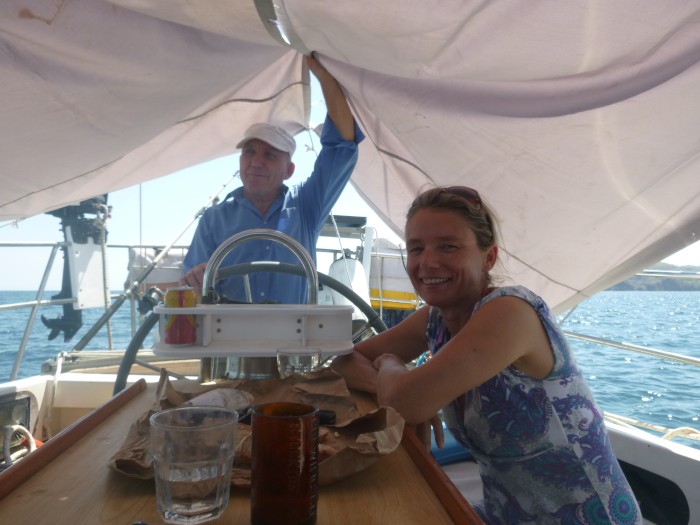
Mar 15 Met at Tambor 7am for Bird Walk. Pootoo and others, including Melodious Blackbird, Rufus-naped Wren,Barred Antshrike, Bar-throated Tiger Heron, Boat-billed Heron, Yellow-crowned Night- Heron, Anhinga,White-collard Seedeater,Blue-black Grassquit,Common Black Hawk, Great Black Hawk, Groove-billed Ani, and of course, the Clay-colored Robin, national bird of Costa Rica.
Sailed with Tjiske and Arno from Tambor to Paquera.
Lovely sail (no motor), conversation, and lunch of homemade bread and gazpacho prepared by Tjiske. Then we caught a nice Sierra Mackerel on the troll line – a great simple pleasant day for us all! Anchored near the beach in front of Tjiske and Arno’s house. Went ashore and climbed 246 steps to their house. This about 4 in afternoon, humid, hot weather. Wow, what a surprise for sailors after three months at sea!
WHAT A HOUSE! – all handcrafted out of native woods, cut on the property where the house stands, to minimize its footprint. From the water and the hillsides, only the blue roof is visible. Simply unique and lovely, an impressive work of art. Designed and built by Arno, an architect friend, and local crafts people. Great views of much of the Gulfo from atop the hill. Dinner there, Grilled the mackerel, conversation late into evening.
Arno Ambrosius, an economist by training, worked in creation of sustainable development and community building for the Netherlands government and Embassy, around the world. He is now a an independent consultant in programs close to his heart in Costa Rica. He was a leader in the reforestation of native, dry temperate rainforest, and establishing community based initiatives, in the Nicoya Peninsula, in the 1990’s. Arno is a wealth of information and nimble ideas, with a magnetic personality.
Tjiske is a family-practice physician from Amsterdam. She and Arno met in southern Africa, some years ago working on projects in Madagascar, Mozambique and Zimbabwe. Tjiske’s specialty is Epidemiology. In Costa Rica she works in volunteer positions reviewing and writing health protocols for the medical and education sector. She has the reserve and intensity of a scientist and the spark of an adventuress. Both Tjiske and Arno are well informed of the problems and danger of economic inequality in the global society. Inspiring to spend time with folks who are living their convictions in creating a more just world. Indeed, we had lots to talk about, special moments of sharing connectedness in a remote location, and lots of laughs.
Climbed down 246 steps, very careful not to tumble headfirst, in pitch dark jungle, with monkeys howling all around us. That was a good adventure in itself! Turned the dinghy around, now the tide was high, and motored back to Kievit, anchored off the beach.
March 16 – Monday Breakfast at Arno and Tjiske's about 8. Hung out there most of the day. Good conversation again and finally Tjitske had to go upstairs to work for a few hours. Arno brought us some information on the organizations he works with. He also shared a fabulous book documenting an exhibition of indigenous clay and rock sculpture inspired by local birds and other fauna. It must be mentioned; we lounged in hammocks, overlooking the bay, in this beautiful house that feels like a magic place in the jungle! Lunch, again enjoying Tjiske’s bread and ceviche from the Sierra mackeral.
Back to Kievit for the afternoon, as our hosts had to work, and we had to digest the amazing 36 hours we had spent in such extraordinary company.S/V Koza had come into the bay and anchored nearby. We took Carolla and Jim back up the steps to meet Arno & Tjiskes’ for drinks at 4. Our hosts had just returned from a memorial service of a prominent member of the little village. They told us about the service and other customs that originate around the little Catholic Church, down the road. Lots of stories from Carolla and Jim to be shared, as well. Dark again when we started down the steps, though we had brought a flashlight. The sun sets at 6pm after a short sunset in the hills. The four of us back to our boats in Koza’s dinghy. Though we all expected to meet up in a day or two, we didn’t see Carolla and Jim until a month later when they arrived in El Salvador.
March 17 Met Arno at 6:30 am for birding walk into his reserve, a property he purchased in the 90’s, up the hill from his house. Interesting and beautiful, wild area with a spring that provides a safe area for many species. A local farmer/rancher guided us through his property, which adjoins Arno’s Reserve, as he was on his way to feed his cows. We didn’t see many birds, maybe we travelled too fast. Lots of howler monkeys. Arno showed us where they had the electric company make a kind of insulation bridge on the over- hanging wires, in the village, so the monkeys wouldn’t be electrocuted. We pushed the dinghy off the beach with the feeling we will return.
PICTURES IN GALLERY OF TREE HOUSE
Sailed with Tjiske and Arno from Tambor to Paquera.
Lovely sail (no motor), conversation, and lunch of homemade bread and gazpacho prepared by Tjiske. Then we caught a nice Sierra Mackerel on the troll line – a great simple pleasant day for us all! Anchored near the beach in front of Tjiske and Arno’s house. Went ashore and climbed 246 steps to their house. This about 4 in afternoon, humid, hot weather. Wow, what a surprise for sailors after three months at sea!
WHAT A HOUSE! – all handcrafted out of native woods, cut on the property where the house stands, to minimize its footprint. From the water and the hillsides, only the blue roof is visible. Simply unique and lovely, an impressive work of art. Designed and built by Arno, an architect friend, and local crafts people. Great views of much of the Gulfo from atop the hill. Dinner there, Grilled the mackerel, conversation late into evening.
Arno Ambrosius, an economist by training, worked in creation of sustainable development and community building for the Netherlands government and Embassy, around the world. He is now a an independent consultant in programs close to his heart in Costa Rica. He was a leader in the reforestation of native, dry temperate rainforest, and establishing community based initiatives, in the Nicoya Peninsula, in the 1990’s. Arno is a wealth of information and nimble ideas, with a magnetic personality.
Tjiske is a family-practice physician from Amsterdam. She and Arno met in southern Africa, some years ago working on projects in Madagascar, Mozambique and Zimbabwe. Tjiske’s specialty is Epidemiology. In Costa Rica she works in volunteer positions reviewing and writing health protocols for the medical and education sector. She has the reserve and intensity of a scientist and the spark of an adventuress. Both Tjiske and Arno are well informed of the problems and danger of economic inequality in the global society. Inspiring to spend time with folks who are living their convictions in creating a more just world. Indeed, we had lots to talk about, special moments of sharing connectedness in a remote location, and lots of laughs.
Climbed down 246 steps, very careful not to tumble headfirst, in pitch dark jungle, with monkeys howling all around us. That was a good adventure in itself! Turned the dinghy around, now the tide was high, and motored back to Kievit, anchored off the beach.
March 16 – Monday Breakfast at Arno and Tjiske's about 8. Hung out there most of the day. Good conversation again and finally Tjitske had to go upstairs to work for a few hours. Arno brought us some information on the organizations he works with. He also shared a fabulous book documenting an exhibition of indigenous clay and rock sculpture inspired by local birds and other fauna. It must be mentioned; we lounged in hammocks, overlooking the bay, in this beautiful house that feels like a magic place in the jungle! Lunch, again enjoying Tjiske’s bread and ceviche from the Sierra mackeral.
Back to Kievit for the afternoon, as our hosts had to work, and we had to digest the amazing 36 hours we had spent in such extraordinary company.S/V Koza had come into the bay and anchored nearby. We took Carolla and Jim back up the steps to meet Arno & Tjiskes’ for drinks at 4. Our hosts had just returned from a memorial service of a prominent member of the little village. They told us about the service and other customs that originate around the little Catholic Church, down the road. Lots of stories from Carolla and Jim to be shared, as well. Dark again when we started down the steps, though we had brought a flashlight. The sun sets at 6pm after a short sunset in the hills. The four of us back to our boats in Koza’s dinghy. Though we all expected to meet up in a day or two, we didn’t see Carolla and Jim until a month later when they arrived in El Salvador.
March 17 Met Arno at 6:30 am for birding walk into his reserve, a property he purchased in the 90’s, up the hill from his house. Interesting and beautiful, wild area with a spring that provides a safe area for many species. A local farmer/rancher guided us through his property, which adjoins Arno’s Reserve, as he was on his way to feed his cows. We didn’t see many birds, maybe we travelled too fast. Lots of howler monkeys. Arno showed us where they had the electric company make a kind of insulation bridge on the over- hanging wires, in the village, so the monkeys wouldn’t be electrocuted. We pushed the dinghy off the beach with the feeling we will return.
PICTURES IN GALLERY OF TREE HOUSE
FESTIVAL at TUXTLA CHICA, MEXICO
21 February 2016 | STREETS FILLED WITH FAMILIES CELEBRATING
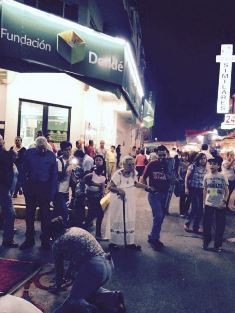
Fantastic festival FEBRUARY 2, in Tuxtla Chico, pueblo del chocolate maya. Amazing carpets made by groups of friends and families, out of colored sawdust, stretched through the village streets. About 8pm, the Virgin statue was removed from the church and the procession began , following the carpets through the streets, accompanied by fireworks and crackers, candles, singing, and drinking piping hot chocolate. So fun to be right there in Chiapis, MX, for this one night festival. Not to be missed!
Photos of carpets and more in Gallery
Photos of carpets and more in Gallery
| Vessel Name: | KIEVIT |
| Vessel Make/Model: | Cape North 43 |
| Hailing Port: | SAN FRANCISCO |
| Crew: | MARJ&DAVE FRIES |
| About: | 0000000000000000 so many days on this voyage together! |
| Extra: | The FRIES' learned to sail in the endangered CALIFORNIA DELTA. The DELTA is a mysterious, fragile, biologically diverse ecosystem, an International Treasure. Check out the latest CA water war at Restore the Delta.org. SAVE THE DELTA! |
KIEVIT's Photos - Main
FRIESAIL
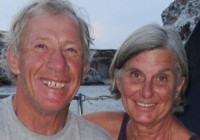
Who: MARJ&DAVE FRIES
Port: SAN FRANCISCO
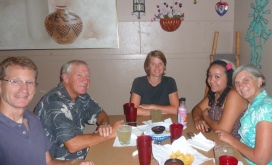
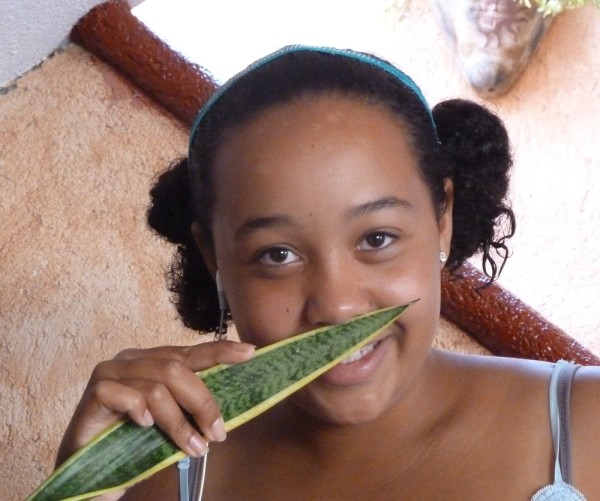
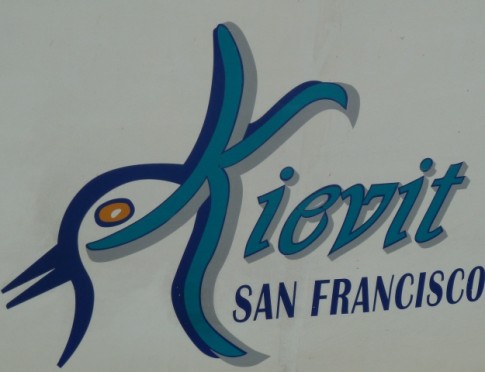
.jpg)
.jpg)
